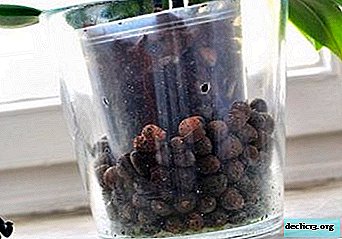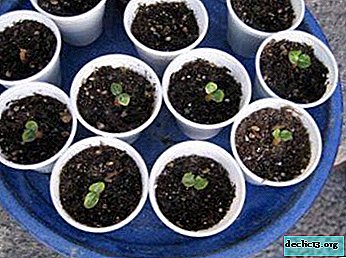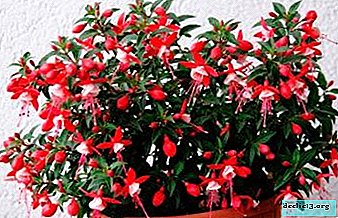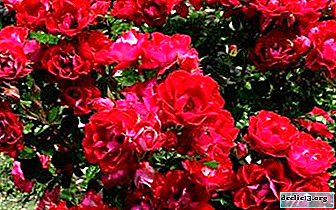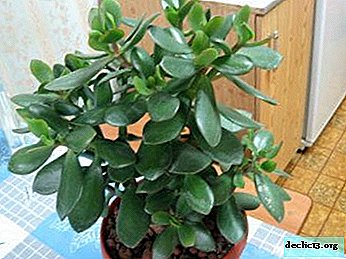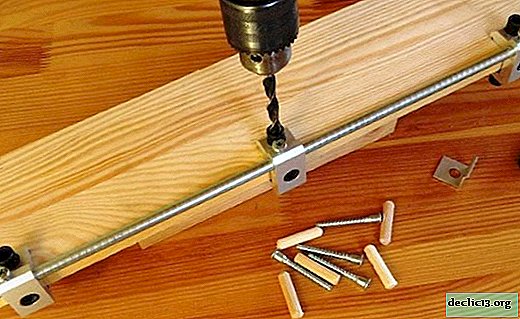How to understand that children grow on an orchid at the root, on the trunk, stem, and what kind of care is needed for them?
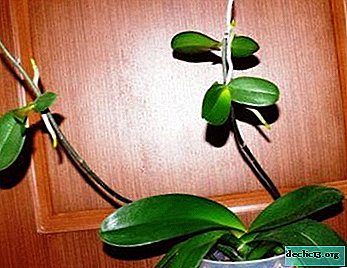
Orchid Baby is a small new flower that appears on an adult plant. Another name for the children is keiki (from the Hawaiian word "keiki" - cub). Children have their own leaves and root system.
Separating such an instance from the mother flower, you can transplant it into a separate pot and get a new flower. This is the easiest way to propagate home orchids.
In this article we will tell you what kind of care is needed for such an orchid and where most often the children appear in this flower.
What parts does it usually grow on?
The baby may appear on the stem of the mother plant in the axils of the leaves or from sleeping buds on the peduncle. The process can be located closer to the root - the basal baby (at the base), or located on the stem above - the basal baby. Read more about how to get a baby on an orchid, read here.
You can separate the baby from an adult orchid if the small flower has 3-4 leaves and roots grown up to 5 cm.
Attention! For too long, the process of separating offspring from an adult should not be postponed, as the baby’s roots can become too fragile and break during transplantation.The development of the baby takes a long time - up to six months, and during all this time the mother flower will need careful careful care, since the presence of offspring is an additional burden on the plant. Most often, phalaenopsis gives cakes, less often they can be seen on:
- epidendrum;
- dendrobium;
- erantee;
- vande.
How to understand that they appeared?
At the initial stage of growth, it can be difficult to distinguish a baby from a peduncle or aerial root.
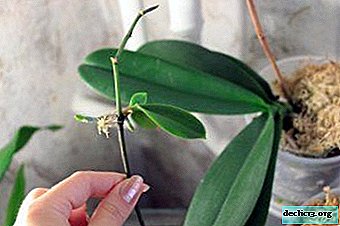 Flower stalk goes from the center up, he has a sharp tip. On the peduncle, you can observe the scales.
Flower stalk goes from the center up, he has a sharp tip. On the peduncle, you can observe the scales.- Root orchids are smooth, without scales and have a rounded tip. Most often, the root is directed downward, root growth to the side and up is less common.
- Baby - the process with its leaves and roots. To understand that it is a new flower that is growing, and not just another peduncle, you have to wait. The appearance of the leaves of the appendix means that the orchid gave birth.
Children on different parts of the flower are similar in appearance and their development is the same, but there are features in each case that are worth paying attention to.
On the peduncle
A growth point or peduncle is the most common case of offspring. After flowering orchids at elevated temperatures and humidity, a baby appears on the peduncle. As a rule, such babies successfully develop into an independent plant without additional help. If the offspring does not appear without intervention, then special stimulation methods can be used: the application of hormonal cytokinin paste awakens sleeping kidneys.
Next, a visual video with a baby orchid on a peduncle:
At the root
You should not plant a new flower until it has acquired its own root system. Check whether the roots of the baby grow by removing the upper part of the substrate. In this case, the separation of the young orchid should be carried out as carefully as possible, since there is a risk of damage to the roots of both the mother plant and the baby orchid. In this case, many flower growers, especially beginners, prefer to leave a young flower in the same pot as their “mother." With proper care, both beauties will give a good flowering.
Next, a visual video with a root baby of an orchid:
On the stalk
Some experts believe that the appearance of a "kindergarten" on the stem (and trunk) is an indicator of improper care, when a flower, dying, directs its last forces to reproduction in order to perform a biological task. However, in practice it happens that cakes on the stem appear in quite healthy flowering specimens.
 Florists also note that the appearance of offspring on the stem occurs with stem injuries or the death of a growth point. A feature of basal children is the lack of their own root system.
Florists also note that the appearance of offspring on the stem occurs with stem injuries or the death of a growth point. A feature of basal children is the lack of their own root system.
A baby on a stalk uses the roots and stem of a mother plant for nutrition. Due to the nature of the development of such a baby, separation from an adult orchid is undesirable - a young flower will not always be able to develop on its own due to an inability to receive nutrients. In this case, two beauties will be in the same pot over time. Gradually, the mother flower dies, and a young plant takes its place.
On the other hand, some orchid lovers share the experience of planting a rootless baby:
- the place of cut is sprinkled with crushed charcoal;
- a small orchid is dried during the day and planted in a fine-grained substrate;
- after which the roots are expected.
Care
In the process of growth, representatives of the "kindergarten" are supplied with nutrients through the mother plant. Therefore, regardless of the place of appearance of the little future beauty, children, as a rule, do not need special care. But "mom" will need increased attention.
When offspring appear, it is necessary to maintain a warm, moist regime. During this period, the mother plant especially needs the right fertilizer.
Reference! When feeding, preference should be given to compositions with a high nitrogen content, which contributes to the growth of green mass.Orchids need less nutrients than other potted plants, therefore, it is extremely important to choose the right dose of top dressing, since excess nutrition will lead to plant diseases.
If it is planned to further separate the offspring from the "mother", and the baby does not give its roots for a long time, then to stimulate this process, you can overlay the attachment point of the new process with sphagnum moss and systematically spray it. You can see simple ways to grow roots in a baby orchid here.
Sometimes, in the process of growth, the baby releases her peduncle before her separation from the "mother". It is recommended to remove the peduncle so that flowering does not inhibit the development of leaves and root system.
Conclusion
The appearance of a baby in an orchid is an infrequent phenomenon. To take advantage of such a wonderful opportunity to get a new luxurious beauty, you need to be able to recognize the appearance of offspring and arrange proper care for the baby orchid.

 Flower stalk goes from the center up, he has a sharp tip. On the peduncle, you can observe the scales.
Flower stalk goes from the center up, he has a sharp tip. On the peduncle, you can observe the scales.